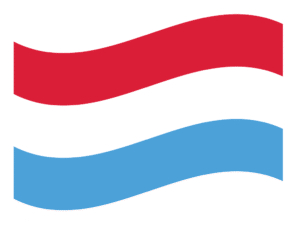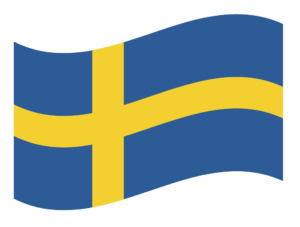A look back at our Open Call
for SMEs

Why this Open Call ?
The Call supported collaborative partnerships (across borders and sectors) of small and medium-sized enterprises (SMEs) in the development of digital health solutions for prevention, prediction, and remote care, from TRL6 (technology demonstrated in a relevant environment) to TRL9 (digital solutions in its final form and in full commercial deployment).
These SMEs are matched with a Key Account Manager that guides them through the Innovation Support Programme.
These solutions meet one of the challenges identified or at least answers to one of the 5 areas described bellow.
Targeted Area(s)
Within DIGIT-PRE, we have defined specific CHALLENGES within these AREAS where SMEs can apply to develop and/or improve solutions. However, there are three different ways for SMEs to apply to the open call:
- By responding to the CHALLENGES and exemplified solutions defined within the project without any changes.
- Re-frame the CHALLENGES and exemplified solutions by, for example, target one of them with a different approach.
- Propose an idea that target another health CHALLENGE than the ones defined, as long as the challenge falls within one of the chosen AREAS and meet project requirements.
For either of these options proposals will be evaluated on to which extent they address and impact the DIGIT-PRE AREAS and CHALLENGES described below.
Mental health
In recent years, there has been growing recognition of the heightened challenges associated with mental illness among children and adolescents, and the problem among adults are also increasing globally. Depression, anxiety, and eating disorders are among the leading causes of disability, along with stress-related problems. However, there is much that can be done to prevent mental illness and provide support to those in need. Digital solutions are critical tools in this area, and we have identified specific areas that require innovative and robust solutions to improve and enhance mental health.
- 1.1. CHALLENGE: Early detection of signs and risk factors for mental illness among kids and adolescents
- 1.2. CHALLENGE: Treatment support for eating disorders
- 1.3. CHALLENGE: Palliative remote care
Rehabilitation
Rehabilitation is defined as “a set of interventions designed to optimize functioning and reduce disability in individuals with health conditions in interaction with their environment”. The need for rehabilitation worldwide is predicted to increase due to changes in the health and characteristics of the population.
We are seeking innovative solutions to improve and strengthen people possibility to rehabilitation and work in everyday life, supported by healthcare using remote care solutions, to maintain as good a health as possible according to their circumstances.
- 2.1. CHALLENGE: Adherence to self-care rehabilitation of Musculoskeletal Disorders
- 2.2. CHALLENGE: Addressing relapse in addiction
Neurological conditions
Neurological conditions refer to a wide range of disorders that affect the nervous system, including the brain, spinal cord, and nerves. These conditions have a significant impact on public health due to their prevalence, the degree of disability they can cause, and the associated healthcare costs.
Digital solutions have the tential to significantly improve the lives of people living with neurological conditions by providing access to information, resources, and support. By leveraging these technologies, early detection, individuals’ possibility to better manage their condition and improve their overall health and well-being is improved.
- 3.1. CHALLENGE: Improving care on post-stroke patients
- 3.2. CHALLENGE: Detection of mild cognitive impairment to prevent dementia
Healthy Lifestyle
Having a healthy lifestyle is essential for a long and healthy life. Healthy habits can prevent the development of chronic diseases, improve physical and mental well-being, and enhance longevity and quality of life.
Furthermore, healthy lifestyle habits can also have economic and social benefits, such as positive impacts on relationships, improved productivity and performance at work or school, and reduced healthcare costs associated with preventable diseases. Many aspects of our lives, including sleeping habits, nutrition, exercise, routines, and environments, can impact our health and overall well-being.
We are seeking digital solutions that can support individuals in their everyday lives to improve their health through good and sustainable lifestyle habits. The ideal solutions should be evidence-based, scalable, and consider factors such as usability, accessibility, and affordability to ensure widespread adoption and sustainable change.
- 4.1. CHALLENGE: Improving teenagers’ sleep quality with incentive approaches
- 4.2. CHALLENGE: Solutions for improved occupational wellbeing for office workers
- 4.3. CHALLENGE: Exergaming for people aged 60+
Health and ageing
Ensuring the well-being and health of older adults is crucial for promoting independence, managing chronic diseases, and fostering social engagement and mental well-being.
As the aging population in Europe becomes more digitally capable, there is a pressing need for digital solutions that can support and enhance the health of older adults. DIGIT-PRE stakeholders seek innovative digital tools that can empower elderly individuals to improve and maintain their health in their daily lives. These solutions should be user-friendly, accessible, and tailored to the unique needs, capabilities, and preferences of older adults.
- 5.1. CHALLENGE: Predicting emergency care to avoid hospitalizations.
- 5.2. CHALLENGE: Preventing falls of the elderly
- 5.3. CHALLENGE: Early detection of joint replacement infections
Who can apply ?
Consortia of 2 or 3 SMEs located in minimum 2 different European regions who aim to accelerate the development of their product from TRL6 to TRL9. Non-SME partners can be involved as “silent partners”: they will not be financed within this call.
The application process is now closed.
We will announce the selected sub-projects on February 23rd, 2024.
How to apply?
- 10 pages (maximum) project proposal – PDF
- 10 slides (maximum) PowerPoint pitch – PPT
- GDPR Form – signed by each partner
- Signed declaration of honour – for each partner
- Ethics and security assessment
- Proof of TRL6 minimum of the product/service of the project – (Video, leaflet, etc.)
- Company Registration Certificate – for each SME partner
- Professional liability Insurance certificate – for each partner
- Passport or ID Copy – for the leader of the project
- Companies’ financial status – for each SME partner
What is the timeline?
Open Call Launch
Launch webinar
Open Call deadline
Publication of sub-projects selection
What is the support awarded?
Financial support and access to consortium services
countries as possible experimentation areas
Personalized support from 10 DIGIT-PRE project partners
FAQ
Mental health
In recent years, there has been growing recognition of the heightened challenges associated with mental illness among children and adolescents, and the problem among adults are also increasing globally. Depression, anxiety, and eating disorders are among the leading causes of disability, along with stress-related problems. However, there is much that can be done to prevent mental illness and provide support to those in need. Digital solutions are critical tools in this area, and we have identified specific areas that require innovative and robust solutions to improve and enhance mental health.
- 1.1. CHALLENGE: Early detection of signs and risk factors for mental illness among kids and adolescents
- 1.2. CHALLENGE: Treatment support for eating disorders
- 1.3. CHALLENGE: Palliative remote care
Rehabilitation
Rehabilitation is defined as “a set of interventions designed to optimize functioning and reduce disability in individuals with health conditions in interaction with their environment”. The need for rehabilitation worldwide is predicted to increase due to changes in the health and characteristics of the population.
We are seeking innovative solutions to improve and strengthen people possibility to rehabilitation and work in everyday life, supported by healthcare using remote care solutions, to maintain as good a health as possible according to their circumstances.
- 2.1. CHALLENGE: Adherence to self-care rehabilitation of Musculoskeletal Disorders
- 2.2. CHALLENGE: Addressing relapse in addiction
Neurological conditions
Neurological conditions refer to a wide range of disorders that affect the nervous system, including the brain, spinal cord, and nerves. These conditions have a significant impact on public health due to their prevalence, the degree of disability they can cause, and the associated healthcare costs.
Digital solutions have the tential to significantly improve the lives of people living with neurological conditions by providing access to information, resources, and support. By leveraging these technologies, early detection, individuals’ possibility to better manage their condition and improve their overall health and well-being is improved.
- 3.1. CHALLENGE: Improving care on post-stroke patients
- 3.2. CHALLENGE: Detection of mild cognitive impairment to prevent dementia
Healthy Lifestyle
Having a healthy lifestyle is essential for a long and healthy life. Healthy habits can prevent the development of chronic diseases, improve physical and mental well-being, and enhance longevity and quality of life.
Furthermore, healthy lifestyle habits can also have economic and social benefits, such as positive impacts on relationships, improved productivity and performance at work or school, and reduced healthcare costs associated with preventable diseases. Many aspects of our lives, including sleeping habits, nutrition, exercise, routines, and environments, can impact our health and overall well-being.
We are seeking digital solutions that can support individuals in their everyday lives to improve their health through good and sustainable lifestyle habits. The ideal solutions should be evidence-based, scalable, and consider factors such as usability, accessibility, and affordability to ensure widespread adoption and sustainable change.
- 4.1. CHALLENGE: Improving teenagers’ sleep quality with incentive approaches
- 4.2. CHALLENGE: Solutions for improved occupational wellbeing for office workers
- 4.3. CHALLENGE: Exergaming for people aged 60+
Health and ageing
Ensuring the well-being and health of older adults is crucial for promoting independence, managing chronic diseases, and fostering social engagement and mental well-being.
As the aging population in Europe becomes more digitally capable, there is a pressing need for digital solutions that can support and enhance the health of older adults. DIGIT-PRE stakeholders seek innovative digital tools that can empower elderly individuals to improve and maintain their health in their daily lives. These solutions should be user-friendly, accessible, and tailored to the unique needs, capabilities, and preferences of older adults.
- 5.1. CHALLENGE: Predicting emergency care to avoid hospitalizations.
- 5.2. CHALLENGE: Preventing falls of the elderly
- 5.3. CHALLENGE: Early detection of joint replacement infections
Frequently Asked Questions
ERRATUM
There is a mistake in the Guide for Applicants in section 6. Manage your grant, part 6.1.1. Eligibility Check where NDA (Non-Disclosure agreement) and CA (Consortium agreement) are requested for the application.
THIS IS NOT THE CASE, you don’t need to upload these documents in your application (but rather in the later stages after approval)
What is the main difference between a coordinator and a partner? What should I choose? (In terms of subventions, responsabilities...)
To form a sub-project, one Lead Partner and one or more Supporting Partner(s) are needed. The LP will take on the role of coordinator, as they will become a part of the DIGIT PRE consortium and act as a bridge between the sub-project and the DIGIT PRE consortium. This role, comes with more responsibilities than the SP role, but attracts a higher financing rate and provides the opportunity to drive the project and pursue more freely, one own’s agenda.
Can I apply alone or with a partner from the same region?
No. You have to find and match with a SME partner, from another region in the DIGIT-PRE project, to be eligible to participate in the DIGIT-PRE Open call.
Can SMEs join multiple projects?
No. Only one application per SME is allowed, as the setup of the DIGIT-PRE subproject only allows each SME partner to participate in one sub-project. So as a joint application of 2 SMEs in 2 different regions in the project, you can apply once.
Is it possible to send in one application as Lead Partner and another as Supporting Partner ?
No. The setup of the project prevents having more than one application approved.
How can I find a partner ? Can you help me locate a partner suitable for my needs ?
Please register in the Matchmaking Tool available at www.digit-pre.eu, where it is also possible to see other SME companies looking for partners. Also, contact the regional represantative in the DIGIT-PRE project, in order to receive hands-on support in finding another SME partner from another region. You can use www.digit-pre.eu/contact/ and it will redirect you, to your regional representative.
If I am a silent partner, can I be part of more than one application?
Yes. As silent partners are excluded from receiving direct financial support, it is possible to be involved in more than one sub-project. Preferably, the contact persons should differ between the different sub-projects but if this is not possible, it is not considered a major obstacle.
What does it mean to be a Lead Partner in a subproject ?
Due to the setup of the project, in order for Lead Partners to receive the full support they need to become a beneficiary of the European Commission (= a formal partner in the DIGIT-PRE consortium).
This setup allows us to provide a larger amount of support to the SMEs who take on the role as Lead Partner. It also comes with some administrative efforts, as a result of becoming an I3 (EC funding) grant beneficiary.
Is there a limitation on how many people are involved in the project work ? Can it include people working part time ?
No. There is no limitation on how many people can be involved in each DIGIT-PRE sub-project. Part-time workers can be included. However, for reporting purposes, it is recommended to keep the amount of people involved to a minimum (and instead maximise their time spent on allocation of tasks).
As SME, do we have to have only patients as customers or could we also have individuals at home or other customer groups ?
You can have individuals at home as customers. One of the cornerstones of DIGIT-PRE is the consumer focus, so there is no need to work only with patients in focus.
Also, another project goal is to work on prevention and prediction – we aim to keep people from becoming patients.
How do I make sure to protect my solution ? Is there some for of IP safeguarding statement?
The ownership of all intellectual property created during the Innovation Support Program delivered via the DIGIT-PRE Open Call, will remain with the party that develops it. The Sub-Grant Agreement, will define provisions regarding joint ownership of the results of the granted projects from an IP point of view.
In addition, the applying SMEs, will also define this issue (foreground/background IP) in their sub-project. A formal Consortium agreement will be signed between the partners of the sub-project.
How do I know if my solution is « consumer facing » ?
There is a clear definition in Section 8 in the “Glossary in the Guide for Applicants.”
If you still are unsure, feel free to reach out to your local representative for more detailed guidance.
Can an SME based in a region that does not apply open an office in the region in order to comply?
We strongly encourage partnerships where companies are already in contact in the suggested regions, as DIGIT PRE are closely linked to these, and want the investments to benefit the regions parttaking in the project.
However, we cannot prohibit you from starting up a postbox branch office in any region, but by doing so we are moving away from one of the core concepts of DIGIT PRE project and this type of action is not recommended.
Which documents in the application are joint, and which are individual ?
Individual documents: SMEs’ financial status, Passport or ID for the Lead partner, company (SME) registration certificate, Professional insurance certificate.
Joint documents: Sub-project proposal (10 pages max.), Powerpoint Pitch (10 slides)
Proof of attaining Technology Readiness Level TRL6
Documents to be signed by each partner: GDPR data protection form, Declaration of honour
The documentation requires a “professional liability insurance certificate”. Is it obligatory? What type of specific insurance is it? Does it have to be joint between both companies for the project or independent?
Each SME needs to provide proof that they have some form of business insurance – it does not have to be a specific liability insurance (as this is only mandatory in France).
This request is to safeguard that participating companies have covered their basic needs for insurance purposes, and that they are properly covered in the event of a problem. The insurance is not shared among partners but is individual for each party. Depending on the structure of the company, it can be in the name of the legal entity of the SME or the CEO, as a natural person. There is no specific amount suggested for coverage, it should be adequate for the type of business that the SME engage in, and it should cover all company activities. The geographic area covered should be the one that the SME already operates in or intends to operate in, in the near future.
Can I apply as a private person or do I need to have a company registered?
Natural persons are NOT eligible for the DIGIT-PRE project. An exception is made for self–employed persons, i.e. those registered as sole traders, where the company does not have legal personality separate from that of the natural person.
Is it necessary to have employees to be considered a SME (and therefore eligible)?
According to the European Union’s definition of an SME, you can have between 0-250 employees. To be eligible you do not need to have any employees, however it is recommended to consider it carefully with regards to being able to deliver project activities described in your application.
Is the maximum size of a sub-project limited to 3 SMEs (1 Lead Partner + 2 Supporting Partners)?
No. There is a minimum of 2 partners for each application, but no maximum limit. Make sure that the partners you include in your sub-project are relevant to the activities you plan and that the constellation is manageable, but apart from that you are more than welcome to be more than 2 partners sending in an application together.
What is meant by « cross-sectoral activities for SMEs » ?
SMEs applying together should be complementary so that each of them bring in their own perspective to the joint project work. Most of the sub-projects will be cross-sectoral by nature since by combining 2 or 3 different companies there should be coverage from more than one sector, also the joining SMEs are probably not likely direct competitors meaning that they operate within different areas and are therefore complementing eachother.
We already have a PIC number as a result of participation in other European projects, is this enough for the application ?
Yes. It is the same number for all European projects, one organisation = one PIC number.
Why is the financial setup structured that way ?
In order to be able to maximise the support to SMEs given from the DIGIT-PRE project, this specific setup has been chosen as the optimal one in accordance with EC laws and limitations connected to EC interregional financing intruments like the I3.
By including Lead Partners in the DIGIT-PRE consortium, the consortium is able to give a larger amount of support and therefore also create bigger impact.
For the “Verification of Companies’ financial status”, what specific document must be provided (if any)?
This statement that does not need to follow a certain structure. The purpose of it is to verify that the bank account you register for the funding payments is indeed is linked to your company.
The Verification of a company’s status can be a print screen of the bank account itself (you can blur out the numbers/money in your account, they are not relevant), or some other form of statement from your bank where it is clear that the bank account is linked to your company name – to summarise, the document must show the account number that you intend to use to receive the payments AND your company name.
Is the financing received via the DIGIT PRE investment to be considered State aid ? Can we also apply for funding from other sources?
No, the investment is not considered as state aid. You can apply for other sources of funding, such as investments from different sources to your company in general. However, you cannot apply for EU- or national funding for the same activities that you plan to implement during the course of the DIGIT PRE Innovation Support Program
Within the types of expenses approved for the Lead Partner, are they are permitted to report assets as costs? For example, are purchase of sensors or other hardware that may be used for a test allowed?
As mentioned in the Guide for Applicants, costs related to personnel, sub-contracting and travel are accepted. Purchasing hardware is not recommended as it is rather complicated to include any fast or slow depreciation assets. This is valid for the Lead Partner. On the other hand, the funds provided to the supporting partner could be utilized for such these purchases, since they do not have to report expenses to the same detailed level.
What is the level of detail in financial reporting and how strongly should it be connected to our accounting?
The project costs should be accounted for in a separate ledger. There is no need to attach invoices/payment slips/other forms of verification at this stage (however, it should be available for potential reviews so it needs to be kept in order).
Lead Partners will, on a quarterly basis, report their financials in a simple format and in addition to this a progress report of 2-3 pages will need to be produced jointly by the sub-project and shared with the KAM.
How do we calculate personnel costs? Do we use a flat rate?
You can use actual costs, so no need for a flat rate. In the case of being an SME owner that does not take out a salary, you can use unit costs: https://ec.europa.eu/info/funding-tenders/opportunities/docs/2021-2027/common/guidance/unit-cost-decision-sme-owners-natural-persons_en.pdf
In the cast of sub-contracting, is an invoice sufficient as verification?
We recommend setting up a contract with potential vendors. It can be ok with very simple agreements as long as they are in written and the terms approved by all parties.
What does the in-kind contribution mean for Lead Partners ?
There is no need for SMEs to provide any form of financial investment after being selected to participate in this project. However, in order to receive the full amount of grant you will need to present is 80k euro in costs connected to your sub-project. These costs can be in the form of personnel costs, sub-contracting or travel expenditures. Our recommendation is that the majority of this in-kind contribution is personnel costs as this is by far the easiest to handle administratively.











